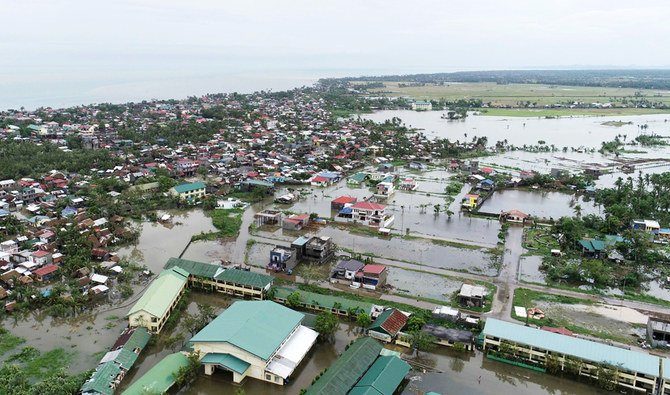
In Eastern Samar, where it made its first landfall on Thursday, the storm caused "unimaginable" damage to infrastructure, Governor Ben Evardone said on Friday.
Among the damaged facilities were schools that have been converted into COVID-19 quarantine centers.
Pictures shared by netizens showed roofless buildings, uprooted trees and toppled electric poles. Several major roads were blocked by floodwater and debris.
In a radio interview, Evardone said that many areas in the province were left without power and communication lines were down.
"As of now, the storm has subsided but electricity and communications lines are down in some of the towns. Even the radio facility of the province was destroyed," he said.
He added that the situation in evacuation centers was a nightmare for maintaining physical distancing to prevent the potential spread of COVID-19.
The volatile situation has been further aggravated by a dengue outbreak in the province.
"We are really faced with a big challenge," Evardone said, adding that the province had yet to recover from the destruction left by typhoon Ursula (Phanfone) last December and its disaster mitigation funds were already depleted.
"Nevertheless I think we'll be able to make it, especially if there will be help from the national government," he said.
At least 24 towns in Northern Samar, 18 in Samar, and two in Biliran were also experiencing power outages as power transmission lines have been damaged, police said.
A report by the National Disaster Risk Reduction and Management Council (NDRRMC) said that there were "heavy" damages to high-risk structures in other areas such as Sorsogon in Albay, Northern Masbate including the western portion of Camarines Norte and Camarines Sur, and the southern portion of Quezon province.
In Albay, where some 15,000 families were evacuated, shelters could accommodate only half of them. Other evacuees were brought to churches where they were required to keep a distance of one meter from each other to prevent the spread of COVID-19.
The NDRRMC has yet to release a report on the number of affected people and casualties.
Ambo, the first typhoon for the country this year, struck at 12:15 p.m. local time on Thursday.
After making five more landfalls, it has weakened into a severe tropical storm, but continued to head for the northern part of Quezon and Laguna early on Friday afternoon.
According to the latest updates by the state weather bureau, until Friday night moderate to heavy and intense rains were expected over southern Luzon, Metro Manila and central Luzon.
Between Friday night and Saturday, moderate to heavy rains with at times intense rains are expected over northern Luzon.



Reader Comments
to our Newsletter